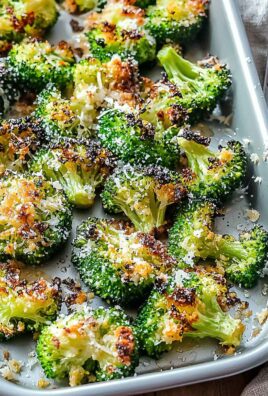Thai Coconut Chicken, a symphony of sweet, savory, and subtly spicy flavors, is about to become your new weeknight obsession. Imagine tender chicken simmered in a creamy coconut milk broth, infused with aromatic ginger, garlic, and a hint of chili. Are you drooling yet? I know I am just thinking about it!
This dish draws inspiration from the rich culinary traditions of Thailand, where coconut milk is a staple ingredient, lending its velvety texture and delicate sweetness to countless curries and soups. While variations abound across different regions, the core elements of coconut milk, chicken, and fragrant spices remain constant, a testament to the dish’s enduring appeal.
What makes Thai Coconut Chicken so irresistible? It’s the perfect balance of flavors, the comforting warmth of the spices, and the sheer ease of preparation. It’s a dish that satisfies both your cravings and your need for a quick and healthy meal. The creamy coconut milk coats every piece of chicken, creating a melt-in-your-mouth experience that’s simply divine. Plus, it’s incredibly versatile serve it with rice, noodles, or even quinoa for a complete and satisfying meal. Get ready to experience a taste of Thailand in your own kitchen!
Ingredients:
- 1.5 lbs boneless, skinless chicken thighs, cut into 1-inch pieces
- 1 tbsp coconut oil
- 1 medium yellow onion, chopped
- 2 cloves garlic, minced
- 1 inch ginger, grated
- 1 red bell pepper, sliced
- 1 green bell pepper, sliced
- 1 (13.5 oz) can full-fat coconut milk
- 2 tbsp red curry paste
- 1 tbsp fish sauce
- 1 tbsp soy sauce
- 1 tbsp brown sugar
- 1/2 tsp turmeric powder
- 1/4 tsp red pepper flakes (optional, for extra heat)
- 1 lime, juiced
- 1/4 cup chopped fresh cilantro, for garnish
- Cooked rice, for serving
Preparing the Chicken and Aromatics
- First, let’s get our chicken ready. Pat the chicken pieces dry with paper towels. This will help them brown nicely when we sear them. Set them aside for now.
- Next, we’ll prep our aromatics. Chop the yellow onion into small pieces. Mince the garlic I like to use a garlic press for this, but finely chopping it works just as well. Grate the ginger. Fresh ginger is key here; it adds a wonderful warmth and zing to the dish.
- Now, slice the red and green bell peppers. I like to cut them into strips that are about 1/4 inch thick. This allows them to cook evenly and retain a bit of their crispness.
Cooking the Thai Coconut Chicken
- Heat the coconut oil in a large skillet or Dutch oven over medium-high heat. Coconut oil adds a subtle sweetness and a lovely aroma to the dish.
- Once the oil is hot, add the chicken pieces to the skillet. Be careful not to overcrowd the pan; you may need to cook the chicken in batches. Sear the chicken on all sides until it’s nicely browned. This step is important because it adds a lot of flavor to the dish. Remove the chicken from the skillet and set it aside. Don’t worry about cooking it all the way through at this point; it will finish cooking in the sauce.
- Add the chopped onion to the skillet and cook until it’s softened and translucent, about 5-7 minutes. Stir occasionally to prevent it from burning.
- Add the minced garlic and grated ginger to the skillet and cook for another minute, until fragrant. Be careful not to burn the garlic; it can become bitter very quickly.
- Stir in the red curry paste, turmeric powder, and red pepper flakes (if using). Cook for about 1 minute, stirring constantly, until the curry paste is fragrant. This step helps to bloom the spices and release their flavors.
- Pour in the coconut milk, fish sauce, soy sauce, and brown sugar. Stir well to combine. Bring the mixture to a simmer.
- Return the chicken to the skillet. Make sure the chicken is submerged in the sauce. Reduce the heat to low, cover the skillet, and simmer for 15-20 minutes, or until the chicken is cooked through and tender. The internal temperature of the chicken should reach 165°F (74°C).
- Add the sliced bell peppers to the skillet and cook for another 5-7 minutes, or until they are tender-crisp. I like my bell peppers to have a little bit of bite to them, but you can cook them longer if you prefer them softer.
- Stir in the lime juice. Taste and adjust the seasoning as needed. You may want to add more fish sauce for saltiness, brown sugar for sweetness, or red pepper flakes for heat.
Serving and Garnishing
- Serve the Thai Coconut Chicken hot over cooked rice. Jasmine rice is a classic choice, but you can use any type of rice you like.
- Garnish with chopped fresh cilantro. The cilantro adds a fresh, vibrant flavor to the dish.
Tips and Variations
- Chicken Options: While I prefer using chicken thighs for their tenderness and flavor, you can also use chicken breasts. Just be careful not to overcook them, as they can become dry. Cut the chicken breasts into 1-inch pieces before cooking.
- Vegetable Variations: Feel free to add other vegetables to this dish. Some good options include broccoli florets, snap peas, carrots, or bamboo shoots. Add them to the skillet along with the bell peppers.
- Spice Level: The amount of red curry paste and red pepper flakes you use will determine the spice level of the dish. If you’re sensitive to heat, start with a smaller amount of red curry paste and omit the red pepper flakes altogether. You can always add more later if you want it spicier.
- Coconut Milk: I recommend using full-fat coconut milk for the best flavor and creaminess. However, you can use light coconut milk if you prefer. Just keep in mind that the sauce will be thinner.
- Sweetness: The amount of brown sugar you use will depend on your personal preference. If you like a sweeter dish, add a little more brown sugar. If you prefer a less sweet dish, reduce the amount of brown sugar.
- Make it Vegetarian: To make this dish vegetarian, substitute the chicken with tofu or tempeh. Press the tofu to remove excess water before cooking. You can also add more vegetables, such as mushrooms or eggplant. Use vegetable broth instead of fish sauce.
- Peanut Butter Addition: For a richer, nuttier flavor, stir in a tablespoon or two of peanut butter at the end of cooking. This will add a creamy texture and a delicious depth of flavor.
- Lemongrass: If you have lemongrass on hand, add a stalk or two (bruised) to the skillet while the sauce is simmering. This will infuse the dish with a wonderful citrusy aroma. Remove the lemongrass before serving.
- Kaffir Lime Leaves: Kaffir lime leaves add a unique citrusy flavor to Thai dishes. If you can find them, add a few leaves to the skillet while the sauce is simmering. Remove them before serving.
- Storage: Leftovers can be stored in an airtight container in the refrigerator for up to 3 days. Reheat gently on the stovetop or in the microwave.
- Freezing: This dish can also be frozen for longer storage. Allow it to cool completely before transferring it to a freezer-safe container. Freeze for up to 2 months. Thaw overnight in the refrigerator before reheating.
Serving Suggestions
- Serve with a side of steamed vegetables, such as broccoli or green beans.
- Top with chopped peanuts or cashews for added crunch.
- Serve with a dollop of plain yogurt or sour cream to cool down the spice.
- Add a side of naan bread or roti for dipping into the sauce.
- Make it a complete meal by adding a side salad.
Why This Recipe Works
This Thai Coconut Chicken recipe is a winner because it’s packed with flavor, easy to make, and customizable to your liking. The combination of coconut milk, red curry paste, and fish sauce creates a rich and savory sauce that perfectly complements the tender chicken and crisp-tender vegetables. The addition of lime juice brightens up the dish and adds a touch of acidity. The recipe is also versatile, allowing you to easily adapt it to your dietary needs and preferences. Whether you’re a seasoned cook or a beginner, you’ll be able to whip up this delicious and satisfying meal in no time.
Troubleshooting
- Sauce too thin: If your sauce is too thin, you can simmer it for a few more minutes, uncovered, to allow it to reduce and thicken. You can also add a cornstarch slurry (1 tablespoon cornstarch mixed with 2 tablespoons cold water) to the sauce and stir until it thickens.
- Sauce too thick: If your sauce is too thick, you can add a little more coconut milk or water to thin it out.
- Chicken is dry: If your chicken is dry, it’s likely that you overcooked it. Be sure to cook the chicken until it’s just cooked through, and avoid overcooking it.
- Dish is too spicy: If your dish is too spicy, you can add a dollop of plain yogurt or sour cream to cool it down. You can also add a little more coconut milk or brown sugar to balance out the spice.
- Dish is not spicy enough: If your dish is not spicy enough, you can add more red curry paste or red pepper flakes.

Conclusion:
This Thai Coconut Chicken recipe is more than just a meal; it’s a passport to a vibrant culinary experience. The creamy coconut milk, the fragrant ginger and garlic, the subtle heat of the chili all these elements combine to create a symphony of flavors that will tantalize your taste buds and leave you craving more. I truly believe this dish is a must-try for anyone looking to add a touch of exotic flair to their dinner table. It’s surprisingly simple to make, even for beginner cooks, and the results are restaurant-quality, guaranteed to impress your family and friends.
But the best part? This recipe is incredibly versatile! Feel free to experiment with different vegetables. Bell peppers, broccoli, or even snap peas would be fantastic additions. For a richer flavor, try using full-fat coconut milk. If you’re watching your sodium intake, be mindful of the amount of fish sauce you add, or substitute it with a low-sodium soy sauce alternative. And if you’re feeling adventurous, a squeeze of lime juice at the end brightens up the whole dish and adds a zesty kick.
Serving suggestions are endless! I personally love serving this Thai Coconut Chicken over a bed of fluffy jasmine rice, allowing the creamy sauce to soak into every grain. Quinoa or brown rice are also excellent, healthier alternatives. For a lighter meal, serve it with cauliflower rice or zucchini noodles. Garnish with fresh cilantro, chopped peanuts, and a sprinkle of red pepper flakes for an extra touch of visual appeal and flavor. You could even turn it into a delicious curry by adding more broth and serving it with naan bread for dipping.
Don’t be afraid to make this recipe your own! That’s the beauty of cooking it’s all about experimenting and finding what you love. I’ve tried countless variations myself, and each one has been a delightful discovery. The key is to start with a solid foundation, and this recipe provides just that.
So, what are you waiting for? Gather your ingredients, put on some music, and get cooking! I’m confident that you’ll fall in love with this Thai Coconut Chicken as much as I have. It’s a dish that’s perfect for a weeknight dinner, a special occasion, or even meal prepping for the week ahead. It’s comforting, flavorful, and incredibly satisfying.
I’m so excited for you to try this recipe and experience the magic of Thai cuisine in your own kitchen. Once you’ve made it, I would absolutely love to hear about your experience! Did you make any modifications? What did you serve it with? What did your family and friends think? Please share your thoughts, photos, and feedback in the comments below. Your insights are invaluable and help me continue to improve and share recipes that everyone will enjoy. Happy cooking, and I can’t wait to hear from you! Let me know if you have any questions, I am here to help!
Thai Coconut Chicken: A Delicious and Easy Recipe
Creamy and flavorful Thai Coconut Chicken with tender chicken thighs, vibrant bell peppers, and a rich coconut curry sauce. Serve over rice for a delicious and easy weeknight meal.
Ingredients
- 1.5 lbs boneless, skinless chicken thighs, cut into 1-inch pieces
- 1 tbsp coconut oil
- 1 medium yellow onion, chopped
- 2 cloves garlic, minced
- 1 inch ginger, grated
- 1 red bell pepper, sliced
- 1 green bell pepper, sliced
- 1 (13.5 oz) can full-fat coconut milk
- 2 tbsp red curry paste
- 1 tbsp fish sauce
- 1 tbsp soy sauce
- 1 tbsp brown sugar
- 1/2 tsp turmeric powder
- 1/4 tsp red pepper flakes (optional, for extra heat)
- 1 lime, juiced
- 1/4 cup chopped fresh cilantro, for garnish
- Cooked rice, for serving
Instructions
- Prepare Chicken and Aromatics: Pat chicken dry with paper towels. Chop onion, mince garlic, and grate ginger. Slice bell peppers into 1/4-inch thick strips.
- Sear Chicken: Heat coconut oil in a large skillet or Dutch oven over medium-high heat. Sear chicken in batches until browned on all sides. Remove from skillet and set aside.
- Sauté Aromatics: Add onion to the skillet and cook until softened (5-7 minutes). Add garlic and ginger and cook until fragrant (1 minute).
- Add Curry Paste and Spices: Stir in red curry paste, turmeric powder, and red pepper flakes (if using). Cook for 1 minute, stirring constantly.
- Simmer in Coconut Milk: Pour in coconut milk, fish sauce, soy sauce, and brown sugar. Stir well and bring to a simmer.
- Cook Chicken: Return chicken to the skillet, ensuring it’s submerged in the sauce. Reduce heat to low, cover, and simmer for 15-20 minutes, or until chicken is cooked through (internal temperature of 165°F/74°C).
- Add Bell Peppers: Add sliced bell peppers and cook for 5-7 minutes, or until tender-crisp.
- Finish and Season: Stir in lime juice. Taste and adjust seasoning as needed (more fish sauce for saltiness, brown sugar for sweetness, or red pepper flakes for heat).
- Serve: Serve hot over cooked rice. Garnish with chopped fresh cilantro.
Notes
- Chicken Options: Chicken breasts can be used instead of thighs, but be careful not to overcook them.
- Vegetable Variations: Add other vegetables like broccoli, snap peas, carrots, or bamboo shoots.
- Spice Level: Adjust the amount of red curry paste and red pepper flakes to your preference.
- Coconut Milk: Full-fat coconut milk is recommended for the best flavor and creaminess.
- Sweetness: Adjust the amount of brown sugar to your preference.
- Vegetarian Option: Substitute chicken with tofu or tempeh and use vegetable broth instead of fish sauce.
- Peanut Butter Addition: Stir in a tablespoon or two of peanut butter at the end of cooking for a richer flavor.
- Lemongrass/Kaffir Lime Leaves: Add bruised lemongrass stalks or kaffir lime leaves while simmering for added flavor (remove before serving).
- Storage: Leftovers can be stored in the refrigerator for up to 3 days or frozen for up to 2 months.
- Serving Suggestions: Serve with steamed vegetables, chopped peanuts, yogurt, naan bread, or a side salad.
- Troubleshooting:
- Sauce too thin: Simmer uncovered or add a cornstarch slurry.
- Sauce too thick: Add more coconut milk or water.
- Chicken is dry: Avoid overcooking the chicken.
- Dish is too spicy: Add yogurt, sour cream, coconut milk, or brown sugar.
- Dish is not spicy enough: Add more red curry paste or red pepper flakes.




